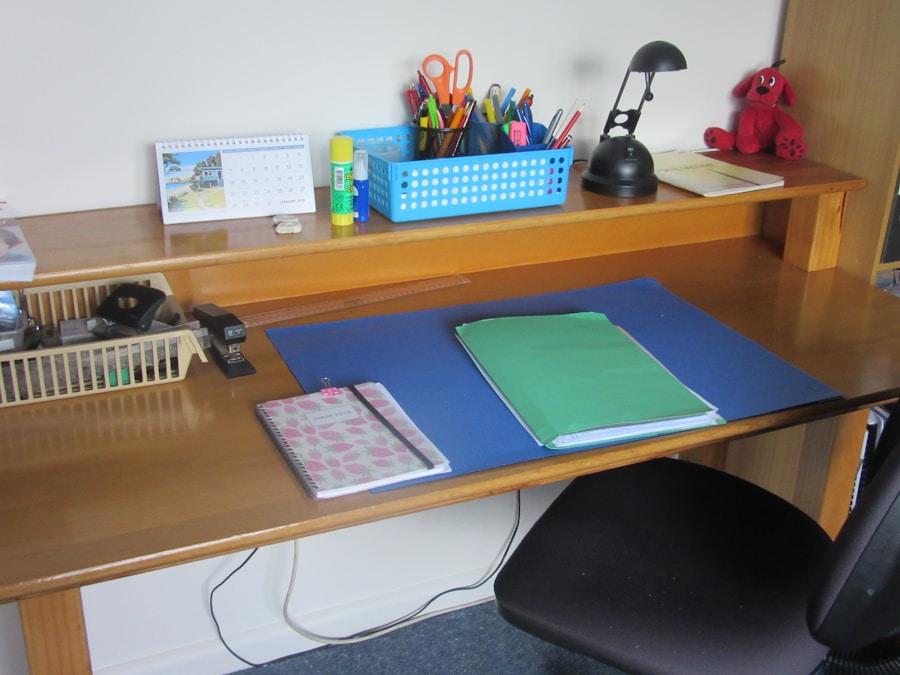The significance of office space extends far beyond mere physical dimensions; it encompasses the very essence of how a business operates and how employees interact within that environment. A well-designed office space can enhance productivity, foster creativity, and promote a positive company culture. The layout and aesthetics of an office can influence employee morale and satisfaction, which in turn affects retention rates and overall performance.
For instance, companies that invest in creating inviting and functional workspaces often see a marked improvement in employee engagement, as individuals feel more valued and comfortable in their surroundings. Moreover, the importance of office space is increasingly recognized in the context of remote work trends. As businesses adapt to hybrid models, the design and functionality of physical office spaces must evolve to accommodate both in-person and remote employees.
This shift necessitates a rethinking of traditional office layouts, moving away from rigid cubicles to more flexible arrangements that support collaboration and adaptability. The ability to create spaces that cater to diverse working styles—whether for focused tasks or team brainstorming sessions—can significantly impact a company’s ability to attract and retain top talent in a competitive job market.
Key Takeaways
- A well-designed office space is crucial for employee productivity and well-being.
- Efficient layout and organization can improve workflow and communication within the office.
- Natural light and greenery can enhance mood and productivity in the workspace.
- Comfortable and functional workspaces are essential for employee satisfaction and performance.
- Implementing technology can streamline processes and improve efficiency in the office.
- Encouraging collaboration and communication can foster a positive work environment and teamwork.
- Minimizing distractions and clutter is important for maintaining focus and productivity.
- Personalizing the space can inspire and motivate employees to perform their best.
Designing an Efficient Layout
Encouraging Collaboration and Concentration
For example, placing collaborative spaces near workstations can encourage spontaneous discussions and teamwork, while ensuring that quieter zones are available for tasks requiring concentration.
Meeting the Needs of Different Departments
The strategic arrangement of furniture, such as desks, meeting rooms, and communal areas, can significantly influence how employees interact and collaborate. In addition to promoting collaboration, an efficient layout should also consider the specific needs of various departments. For instance, creative teams may benefit from open spaces that encourage brainstorming and idea sharing, while finance or legal departments might require more private areas for confidential discussions.
Adapting to Changing Demands
Incorporating flexible furniture solutions, such as movable partitions or modular seating, allows for quick reconfiguration of spaces to meet changing demands. This adaptability not only enhances functionality but also reflects a forward-thinking approach to office design that can accommodate future growth and evolving work practices.
Utilizing Natural Light and Greenery

The integration of natural light and greenery into office design has been shown to have profound effects on employee well-being and productivity. Natural light not only reduces the reliance on artificial lighting but also helps regulate circadian rhythms, leading to improved mood and energy levels throughout the day. Offices designed with large windows or skylights can create a more inviting atmosphere, making employees feel more connected to the outside world.
Research indicates that exposure to natural light can enhance cognitive function and reduce eye strain, ultimately contributing to higher levels of job satisfaction. Incorporating greenery into the workspace further amplifies these benefits. Plants have been shown to improve air quality, reduce stress levels, and increase overall happiness among employees.
A study conducted by the University of Exeter found that employees working in environments with plants reported a 15% increase in productivity compared to those in sterile settings. Simple additions like potted plants, living walls, or even small indoor gardens can transform an office into a vibrant ecosystem that promotes health and creativity. By thoughtfully integrating natural elements into the design, companies can create a more holistic work environment that nurtures both physical and mental well-being.
Creating a Comfortable and Functional Workspace
Comfort is a critical component of an effective workspace, as it directly impacts employee focus and productivity. Ergonomic furniture plays a vital role in this aspect; adjustable chairs, sit-stand desks, and proper monitor placement can help prevent discomfort and long-term health issues associated with prolonged sitting. Companies that prioritize ergonomic design demonstrate a commitment to employee welfare, which can lead to reduced absenteeism and increased job satisfaction.
For instance, organizations like Google have invested heavily in ergonomic solutions, resulting in happier employees who are more engaged in their work. Beyond furniture, the overall ambiance of the workspace contributes significantly to comfort levels. Factors such as temperature control, noise levels, and even scent can influence how employees feel while working.
Open-plan offices may foster collaboration but can also lead to distractions; therefore, incorporating sound-absorbing materials or designated quiet zones can help mitigate noise-related issues. Additionally, personalizing workspaces with individual touches—such as photos or personal items—can create a sense of ownership and belonging, further enhancing comfort and motivation.
Implementing Technology for Efficiency
In today’s fast-paced business environment, technology plays an indispensable role in enhancing workplace efficiency. The integration of advanced tools and software can streamline processes, facilitate communication, and improve overall productivity. For example, project management platforms like Asana or Trello allow teams to track progress on tasks in real-time, ensuring everyone is aligned on objectives and deadlines.
Furthermore, cloud-based solutions enable seamless collaboration among remote teams, breaking down geographical barriers and fostering a more cohesive work culture. Moreover, the implementation of smart office technology can optimize resource management within the workspace. Automated lighting systems that adjust based on occupancy or time of day can reduce energy consumption while maintaining a comfortable environment.
Similarly, smart thermostats can learn employee preferences and adjust heating or cooling accordingly, enhancing comfort while minimizing costs. By leveraging technology effectively, organizations can create a more efficient workplace that not only meets the needs of employees but also aligns with sustainability goals.
Encouraging Collaboration and Communication

Fostering collaboration and communication within the workplace is essential for driving innovation and achieving organizational goals. An office design that encourages interaction among employees can lead to the exchange of ideas and knowledge sharing, ultimately enhancing creativity and problem-solving capabilities. Open-concept spaces with communal areas—such as lounges or breakout rooms—can facilitate informal discussions and brainstorming sessions that might not occur in traditional meeting rooms.
In addition to physical design elements, implementing collaborative tools is crucial for enhancing communication among team members. Platforms like Slack or Microsoft Teams provide instant messaging capabilities that allow for quick exchanges of information without the need for formal meetings. Video conferencing tools further bridge the gap between remote and in-office employees, ensuring that everyone remains connected regardless of their location.
By creating an environment that prioritizes collaboration through both design and technology, organizations can cultivate a culture of teamwork that drives success.
Minimizing Distractions and Clutter
A cluttered workspace can be detrimental to focus and productivity; therefore, minimizing distractions is essential for creating an effective office environment. Implementing organizational systems—such as designated storage areas or digital filing solutions—can help keep workspaces tidy and reduce visual clutter. Employees should be encouraged to maintain clean desks by providing adequate storage options for personal items and documents.
This not only enhances individual productivity but also contributes to a more professional atmosphere within the office. Additionally, addressing noise distractions is vital for maintaining concentration levels among employees. While open-plan offices promote collaboration, they can also lead to increased noise levels that hinder focus.
Incorporating soundproofing materials or creating designated quiet zones can provide employees with spaces where they can concentrate without interruptions. Furthermore, establishing guidelines around noise levels during certain hours can help create a more respectful environment where everyone’s need for focus is acknowledged.
Personalizing the Space for Inspiration and Motivation
Personalization is a powerful tool for enhancing employee motivation and inspiration within the workplace. Allowing employees to customize their workspaces with personal items—such as photos, artwork, or mementos—can foster a sense of belonging and ownership over their environment. This connection to their workspace can lead to increased job satisfaction and motivation as employees feel more comfortable expressing their individuality within the corporate setting.
Moreover, incorporating elements that reflect the company’s values or mission can further inspire employees. For instance, displaying artwork created by local artists or showcasing employee achievements through visual displays can create a sense of pride among team members. Additionally, creating spaces dedicated to relaxation or creativity—such as meditation rooms or art corners—can provide employees with opportunities to recharge their minds and foster innovative thinking.
By prioritizing personalization in office design, organizations can cultivate an inspiring atmosphere that motivates employees to perform at their best while feeling valued as individuals within the larger team dynamic.
If you are looking to revamp your office space, you may want to consider reading the article on the about page of Manager Office. This article provides valuable information on the company’s background, services offered, and their approach to office interior design. Understanding the company’s ethos and expertise can help you make an informed decision when choosing a partner for your office renovation project.
FAQs
What is a manager office?
A manager office is a designated space within a workplace where a manager or supervisor carries out their administrative and leadership duties.
What are the typical features of a manager office?
A manager office typically includes a desk, chair, computer, filing cabinets, and other necessary office equipment. It may also have a meeting area for discussions with team members or clients.
What is the purpose of a manager office?
The purpose of a manager office is to provide a private and organized space for a manager to conduct their work, hold meetings, make decisions, and manage their team effectively.
How does a manager office differ from other office spaces?
A manager office is distinct from other office spaces in that it is specifically designated for a manager or supervisor, providing them with privacy and a professional environment to carry out their leadership responsibilities.
What are the benefits of having a manager office?
Having a manager office allows for privacy, concentration, and a professional setting for conducting meetings and making important decisions. It also provides a space for managers to display their leadership and authority within the organization.


